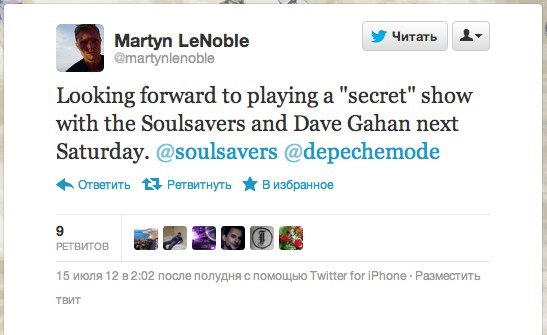Dave Gahan ąĖąĘ Depeche Mode: ąÆąĘą│ą╗čÅą┤ ąĖąĘąĮčāčéčĆąĖ ąĮą░ ąĄą│ąŠ ąŠč湥ąĮčī ą╗ąĖčćąĮčāčÄ čüčéčāą┤ąĖčÄ.










Personal Studio, Personal Choice
Gahan has acquired a beautiful vehicle for getting there via his innovative private studio here in New York City. Built into a residential apartment separate from his own home, Studio Blanco has been constructed with a clear mission: capture one of modern musicŌĆÖs most iconic voices.
Kurt Uenala engineers all at Blanco Studio. (all studio photos in article by David Weiss)
The pilot flying this plane is Kurt Uenala. A Swiss-born engineer/producer with sharp engineering skills, deep production experience, programming and songwriting abilities, and an amiable personality, Uenala is a versatile presence at Studio Blanco, helping Gahan to get where he wants to go ŌĆō as quickly and easily as possible.
Even though Gahan can ŌĆō and does ŌĆō make ample use of NYCŌĆÖs world-class suite of commercial recording studios, Uenala points out that a personal facility is essential for an artist on this level to write, demo new tracks, and also record final vocals ŌĆō as was done here for many of the Soulsavers and upcoming Depeche Mode songs.
ŌĆ£Money is not necessarily a big issue with successful bands, but still at $2500 a day in a commercial studio, you canŌĆÖt be as experimental as you can be at home,ŌĆØ he says. ŌĆ£You can work at a personal studio any day and any time, and that can be a big part of the creative process. The mindset becomes, ŌĆśWe arranged and finished a song a certain way, but can redo it from scratch if we feel like exploring further.ŌĆÖ
ŌĆ£The end result is better than a big room with all of the drama gear. We can book a studio like that for a month, but when that time is up, Beyonce is coming in ŌĆō so you have to go. At that point money doesnŌĆÖt help: ItŌĆÖs booked. Not having a deadline is wonderful, and so is knowing the room in and out.ŌĆØ
ŌĆ£The roomŌĆØ, in this case, is a personal studio operating on a high very level. The obvious centerpiece of the sun-kissed residential space is a space-age white hut which occupies a large portion of the main living room, without engulfing it ŌĆō plenty of space remains in the room and the rest of the apartment to provide headroom for writing and relaxing.
The acoustically isolated structure is made by the Barcelona-based company Studio Bricks. A ŌĆ£self-assembly cabin systemŌĆØ that can be constructed by one person in a short amount of time with minimal tools, Studio Bricks are acoustic solutions made specifically with artists, engineers and producers in mind.
According to Uenala, Studio BlancoŌĆÖs big white box represents the first Studio Bricks deployment in the US. ŌĆ£TheyŌĆÖre modules that are really Legos ŌĆō they snap into each other, but theyŌĆÖre made of sandwich wood and rubber,ŌĆØ he notes. ŌĆ£ItŌĆÖs been here since September, and it really works sonically and in terms of providing acoustic isolation. It reigns in the sound not just of the vocals being recorded, but also of productions and mixes ŌĆō we have to be able to turn it up.
ŌĆ£IŌĆÖve got to admit that first and foremost I fell for the look ŌĆō itŌĆÖs beautiful. This is a very beautiful apartment, and whatever we do has to look good. That was maybe more my prerequisite, because I thought it would be really sad to put a carpeted wooden room in here.ŌĆØ
Inside the Studio Bricks structure ŌĆö which also stands as one of the largest ever designed ŌĆö are Vicoustics foam and wood treatments that can be easily mounted and moved around. ŌĆ£The wooden panels are like variable acoustics,ŌĆØ Uenala explains. ŌĆ£Using foam only is a little too dead for vocals, but its cool for disco drums. When you add wood, thereŌĆÖs a little bit of reflection that sounds natural.
ŌĆ£We didnŌĆÖt think this solution would work for final vocal tracking, but it turned out that it is. In this day and age, with the gear you donŌĆÖt need a huge room to do vocals, guitars or synths. ThereŌĆÖs even an isolation box ŌĆō a speaker cabinet in a flight case ŌĆō so if we ever send something through amps we can mic it, but its not going to bother the neighbors. We have everything we need right here.ŌĆØ
ą┐ąŠą╗ąĮąŠčüčéčīčÄ:









































